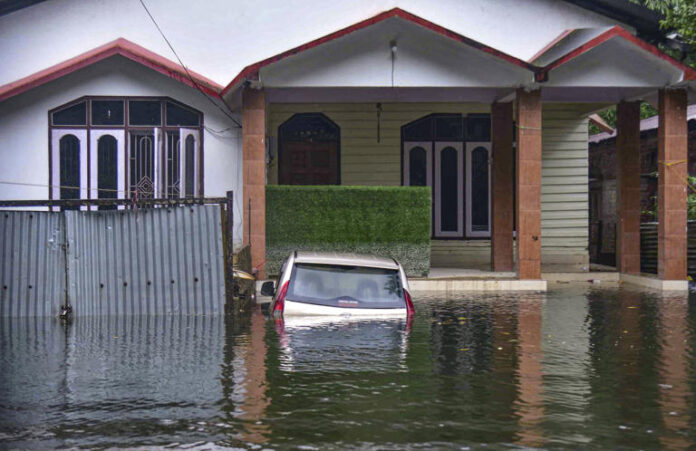The flood situation in Assam remains grim, though there are signs of relief as water levels begin to recede in many affected areas. The state, which faces annual monsoon floods, has once again been severely impacted, with vast stretches of land submerged, disrupting lives, and causing extensive damage to property and infrastructure. Despite some improvement, the overall scenario continues to pose significant challenges to the authorities and residents alike.
This year’s monsoon has brought heavy rainfall, resulting in the swelling of major rivers such as the Brahmaputra and its tributaries. The relentless downpour has led to widespread inundation, affecting over 3 million people across 27 districts. The floodwaters have engulfed nearly 2,000 villages, destroyed crops, and displaced thousands of families. Several regions have reported breaches in embankments, worsening the situation and leading to further inundation.
The floods have triggered a severe humanitarian crisis, with thousands of people seeking refuge in relief camps. The state’s disaster management authorities have established over 500 relief camps, providing shelter, food, and medical assistance to the displaced. However, the sheer scale of the disaster has overwhelmed the resources, leading to overcrowding and inadequate facilities in many camps. The authorities are struggling to meet the basic needs of the affected population, including clean drinking water, sanitation, and healthcare services.
The Assam government, along with the National Disaster Response Force (NDRF) and State Disaster Response Force (SDRF), has been actively engaged in rescue and relief operations. Teams are working tirelessly to evacuate stranded individuals, distribute essential supplies, and provide medical aid. Helicopters and boats have been deployed to reach remote and inaccessible areas, ensuring that relief materials reach those in need.
Despite these efforts, logistical challenges and the vastness of the affected regions have hindered the efficiency of the operations. Many remote villages remain cut off, with roads and bridges either submerged or damaged, complicating the delivery of aid.
In a ray of hope, water levels in several districts have started to recede. The Brahmaputra River, which had been flowing above the danger mark, has shown signs of gradual decline. This has allowed some residents to return to their homes and begin the daunting task of cleaning up and rebuilding. However, the process is slow and fraught with difficulties, as many areas are still waterlogged, and the threat of diseases looms large.
As the immediate floodwaters recede, Assam faces the daunting task of rehabilitation and reconstruction. The floods have left behind a trail of destruction, with damaged homes, schools, roads, and bridges. Restoring normalcy will require significant resources and coordinated efforts from the government, non-governmental organizations (NGOs), and the community.
One of the major concerns is the impact on agriculture, a primary source of livelihood for many in Assam. Floods have ravaged paddy fields and other crops, leading to substantial economic losses for farmers. The government will need to provide financial assistance and support to help the agricultural sector recover.
While immediate relief is crucial, there is a pressing need to address the underlying causes of the recurrent floods in Assam. The state is prone to flooding due to its topography and the heavy monsoon rains, but factors such as deforestation, soil erosion, and poor river management exacerbate the situation. Long-term solutions must focus on sustainable practices, including afforestation, proper embankment maintenance, and effective water management strategies.
Additionally, there is a need for improved early warning systems and community preparedness to mitigate the impact of future floods. Strengthening infrastructure and creating resilient communities can help reduce the vulnerability of the population to such natural disasters.
The flood situation in Assam remains critical, with millions affected and significant challenges ahead. While water levels are receding in many parts, the road to recovery is long and arduous. It is imperative for the government, NGOs, and the community to work together to provide relief, rebuild, and implement sustainable measures to prevent such devastation in the future. The resilience and spirit of the people of Assam will play a crucial role in overcoming this crisis and emerging stronger.




